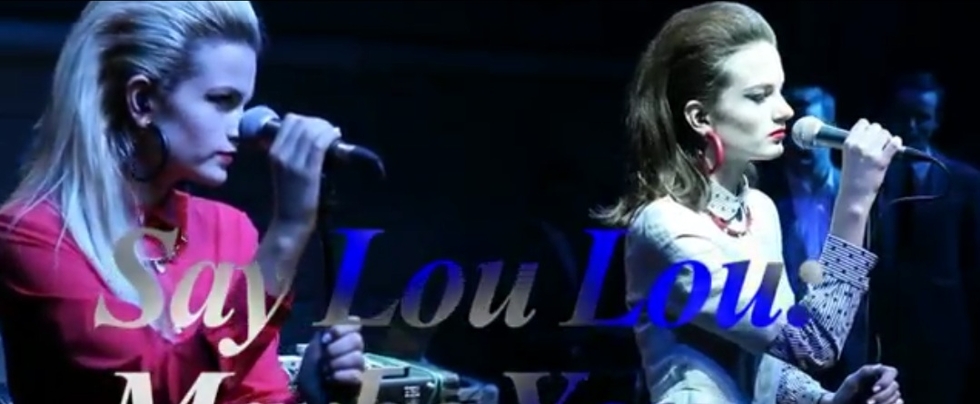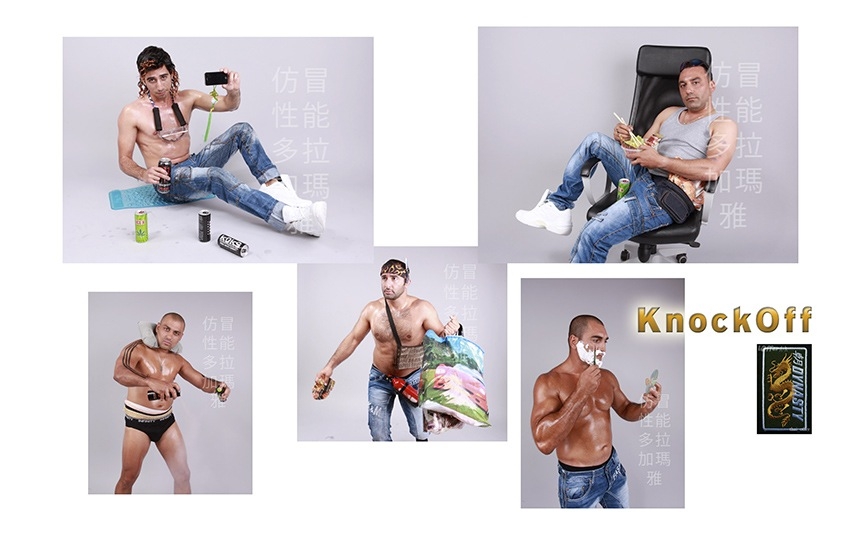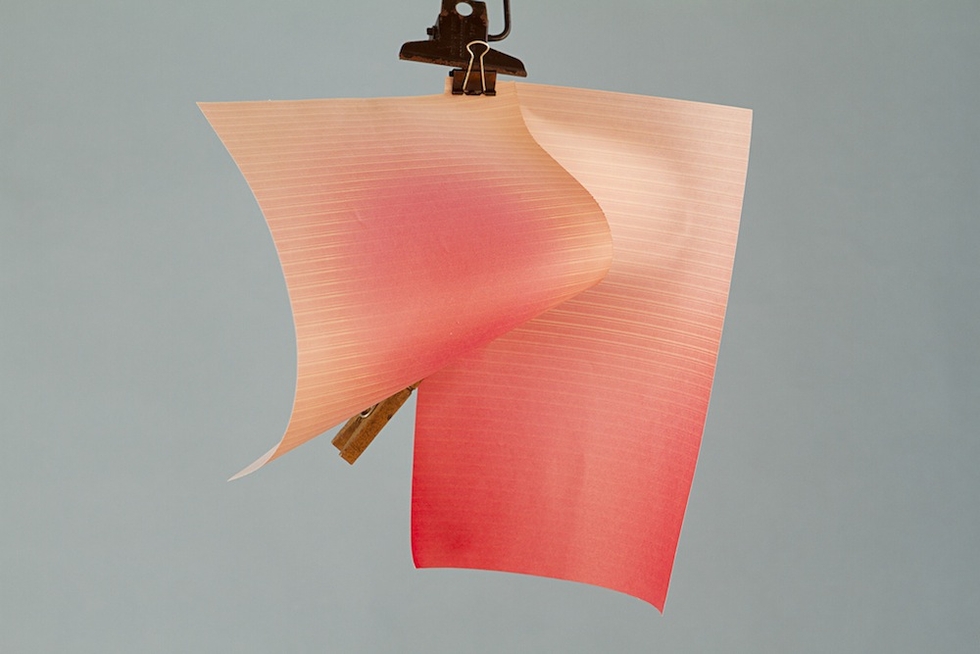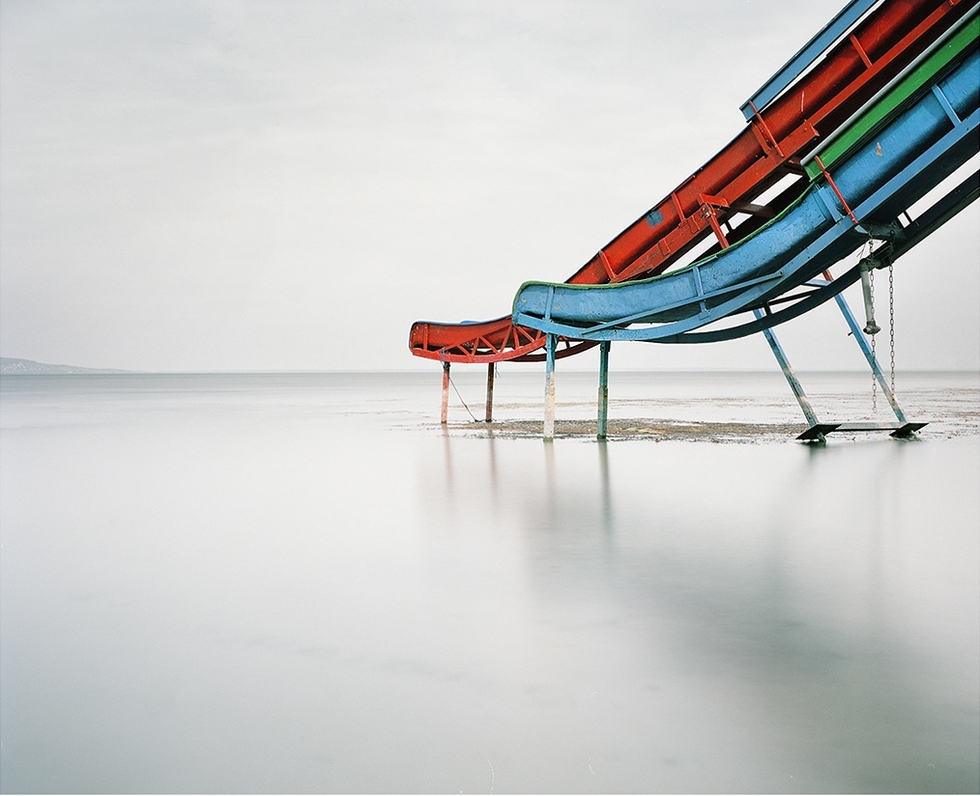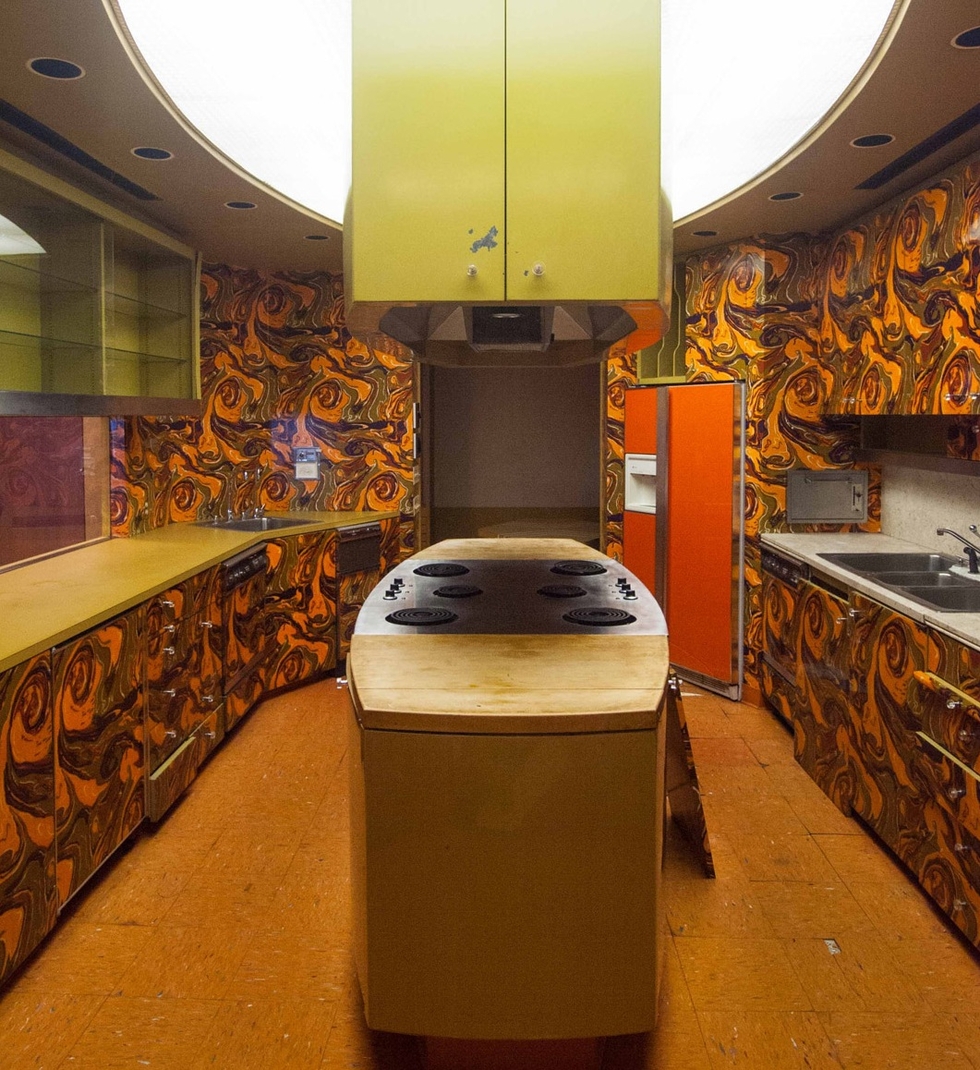Did you know the word "cataract" first appeared in the 15th century as a term for a waterfall? Any ideas about "average"? Turns out around the same time it was used to describe the financial loss when goods were damaged in transit.
Illustrated Etymology is a collaborative illustration project that tasks artists to create new works by interpreting unexpected word origins. To make sure their etymologies were factually sound, the group first reached out to Douglas Harper for permission to use his Online Etymology Dictionary. Harper gladly agreed.
Despite being a collaboration between artists of different backgrounds—some work primarily in branding and advertising, and others specialize in printmaking and fine arts—the collection is still cohesive. The project manages to represent a variety of aesthetics by unifying the works with a general light-hearted tone and the simple request that each image should serve a descriptive or informative function. The results look great on the site, but we can't help but think they're onto an amazing book idea.
The project is currently looking for submissions of both words and illustrations. So if you're sitting on a great etymology or you like the sound of the assignment, be sure to get in touch.
Unusual venues, specially commissioned music, bizarre themes: designer houses have pulled out every trick in the book to enliven a format that fundamentally is just about models strutting a catwalk in clothes.
Leave it to French fashion house and record label Maison Kitsuné to shake things up with Show Business, the house's Fall-Winter 2013 presentation. The video by Pitti W, directed by Loïc Prigent, presents the new Kitsuné wares in a rock concert/fashion show/TV show format starring Kitsuné label associated acts Verbal and Yoon, Say Lou Lou, Yelle, Eli & Fur and Citizens. Bonus: You can buy tunes from the bands online right now, as opposed to the threads, which hit later this year. We tend to think the gig format makes for an approachable intro to the French fashion line and an interesting additional chapter to the story of rock and fashion's on-again off-again love affair.
Artists Dora Budor & Maja Cule, known as Dora & Maja, first started working on their KnockOff performance during a residency at Tanzfabrik Uferstudios in Berlin. The residency was held in studios for dance projects, but the pair was interested in creating a performance more grounded in reality than a contemporary dance. They drew inspiration from a fascination with the “making of” extras on DVDs, and conceived of a staged performance/video art piece with local MMA (Mixed Martial Arts) fighters filming action movies in front of an audience.
For their first performance in Berlin, Dora & Maja spent five days convincing members of a local Turkish fight club to participate in the show. Their next two performances included a former breakdance champion in Norway and a group of aspiring soldiers in Croatia—all well-versed in action movie stars and stunts.
The performance is a nod to an obscure "knockoff" film genre—sometimes known as "mockbusters"—which use elements from actual Hollywood blockbusters and poorly shot green-screen footage in the production of borderline counterfeit films on a fraction of the budget. For their performances, D+M scour YouTube for clips of semi-famous crime scenes, security camera footage, and city panoramas. The pair intends to keep growing their library for future shows.
The live KnockOff performance alters the traditional cinematic experience by showing the audience the production and the final product at the same time. Seeing both stages at once replaces the "magic" of filmmaking for the visceral response to live violence. The rotating cast of local fighters and constantly expanding video library make every performance of KnockOff slightly different. The artists believe the small differences force the audience to simultaneously watch the counterfeit copy and the sequel at once.
It turns out even the title of the project has a simultaneous meaning: the choreography is based on Jean-Claude Van Damme's 1998 film Knock Off, in which he and Rob Schneider find themselves involved in a counterfeit denim ring.
Facundo Pires' work doesn't have a singular aesthetic. But we think it's safe to say he's curious about errors. Visually speaking, his images reveal certain logic missteps, like a rainbow-colored fungus on a tree trunk or shadows that don't necessarily match their origin. But Pires doesn't just illustrate errors, he also causes them. To create his subjects he's been known to force inkjet printing jams, expose photos to the elements, and otherwise alter objects to photograph manipulated interruptions in his home city of Buenos Aires.
For Pires, the interruptions aren't just fascinating because they're disruptive by nature. Instead, he's interested in framing photos in temporary locations, like construction projects, to capture images he likely won't see again.
Attention bearded gents of Brooklyn: the days of schlepping to Manhattan for a true barbershop experience are over. Last month, Sam Buffa, co-owner of Manhattan’s F.S.C. Barber, opened the Barber & Supply Flagship in Brooklyn to offer discerning dudes of Kings County a standard cut/shave (and then some…) that’s fuss-free, high on quality and low on pretension.
Truly a flagship, the 3,000-square-foot space—a former garage—was transformed to create a modern, airy take on the time-honored tradition of a communal barber experience. Drop ceilings were removed to expose original beams and a vaulted skylight was added to create a sky-high vibe with lots of natural light. The 1,300-square-foot barbershop area showcases ultra sleek Belmont barber chairs from the '60s. A massive 16-foot Grand Central’esque bench is anchored in the center so fellows can hang out, chat and chill like a crew. The walnut flooring warms the space just enough to curb that “I’m in a cold garage” feeling.
The front of the shop is used as an apothecary that boasts a well-curated collection of fancy grooming tools, as well as products. Hard Water Pomade by Baxter, Alder’s Dry Shampoo and Sage Styling Cream by Malin+Goetz are just a few items displayed on antique glass shelves. Don’t forget to grab a Kent Folding Pocket Comb for on-the-go grooming. Buffa plans to hold rotating pop-up shop collaborations with quality brands to keep it fresh. To check out a list of services or score products, visit Barber & Supply at fscbarber.com.
Barber & Supply, 101 North 8th Street, Brooklyn. Hours: Monday-Friday, 12 pm–8pm, and Saturday & Sunday, 10am–6 pm; (718-522-4959)
Oddly arranged everyday objects centered on pastel backgrounds, the backside of long-haired heads, simple items given the treatment of luxury desirables plus a pizza wrapped in underwear: the aesthetic passions of Charlotte Audrey Owen-Meehan defy description. None is offered—the little text that's shown are usually responses to praise from superfans. There are no constant themes in obsessively selected art and fashion photography beyond those often washed out pastels. Yet, there is a consistent viewpoint: it's playful in one sense, but favors serious, clear, purposeful composition, and fruit. Beauty, strangeness and wit are ever present in equal doses.
It's hard to imagine that only a few months after the Cuban Revolution the new government would have any interest in film production. As it turns out, the new regime believed the medium was the best way to educate and inspire population. In 1959, Cuba's new founding fathers quickly formed the ICAIC, or the Instituto Cubano del Arte y la Industria Cinematográficos (The Cuban Institute of Cinematographic Art and Industry) with a mission of converting the island nation from a movie consumer to a movie producer.
The Danish Film Institute has collected a range of posters surveying fifty years of Cuba's film industry.
Historical context aside, we like these posters by distinctive artists such as Niko, Dimas, and Bachs for their bold illustrations, simplicity of design, and deep color palettes. Not to mention the gorgeous typography. To see more, head over to the Danish Institute of Film's Flickr page.
A "tribute to a friend" is how designer Johan Andersson affectionately refers to his latest project, a documentary film featuring the work and life of Swedish design icon Olle Eksell. Andersson was 22 years old when he moved to Stockholm to study advertising at the Berghs School of Communication. Young, fearless, and clearly impressionable, Andersson looked up his "great hero" Olle Eksell and phoned the acclaimed designer the same day. To his surprise, Eksell graciously invited him over for coffee and the two exchanged thoughts on advertising, design, and life—an exchange that, until Eksell’s death in 2007, would become a routine occurrence.
In collaboration with the Eksell family, Andersson built a website in Olle’s honor, featuring photos, illustrations, and movies, as well as an online shop, where he sells a collection of products that he designed and produced in Eksell’s name. But it’s his documentary film work (see the trailer, above) that Andersson hopes will generate an international buzz around the designer’s extraordinary life and work. The film, currently in its fundraising phase, plans to highlight Eksell’s contributions to Swedish design, while examining his compelling life with wife Ruthel Eksell. “The focus is to continue to spread the mission of Olle Eksell and his beliefs,” explains Andersson. “For me, meeting with Olle was a life-changing experience and I want people to share his ideas about good design and economy.”
To learn more about the film, or back this project, please visit Andersson’s Olle Eksell fundraising page.
Originally from Budapest, Hungary and now based in Vienna, Akos Major shoots with an eye for simplicity. He often places his subjects close to the center of the frame, and uses intentionally spare background composition to make his work geometrically pleasing.
We think Major's "Lumen" series is a great example of his work with color. The series, shot in an unrecognizable field of white snow, focuses on an object or series of objects with one strong color. The objects appear as interruptions in the white background, and with Major's attention to symmetry and balance, the photos give the otherwise innocuous forms a new context. Think Richard Misrach's Desert Cantos with a touch of humor.
Chicago photographer Lee Bey shot the former offices of Johnson Publishing, publishers of Ebony and Jet, with original interiors by William Raiser/Arthur Elrod and wrote up the history and his tour of the space for Chicago public radio station WBEZ. The iconic Ebony/Jet Building on Michigan Avenue can be seen from Grant Park, but its dramatic, early '70s mod funk interiors are little known. They have hardly changed over the years. Not pictured, howerver, are John H. Johnson's private offices. Last year, the space was sold to Columbia College and while it says it will preserve the first floor sculpture, "Expansive Construction," we'd guess the offices won't survive the building rehab.

